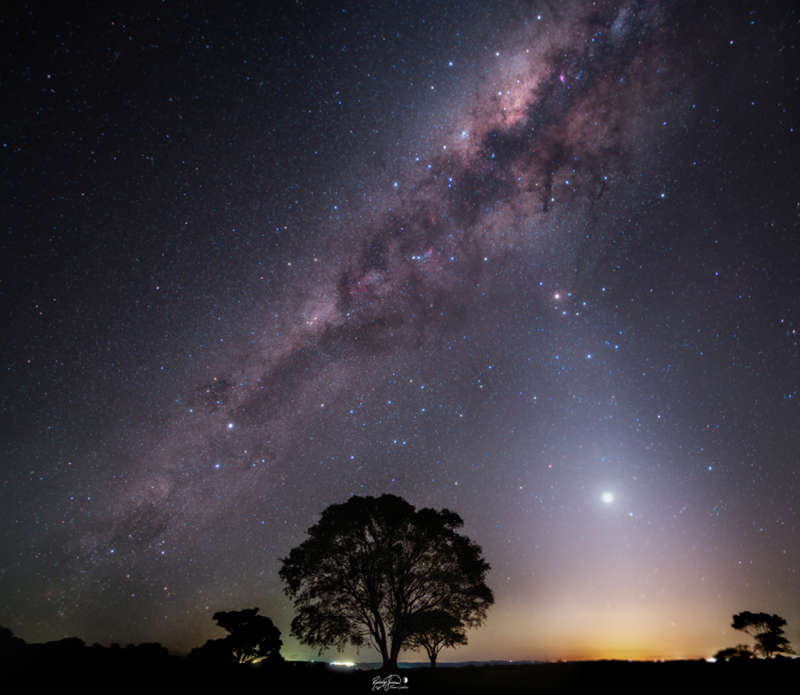
|
Credit & Copyright: Rodrigo Guerra
Explanation:
Posing as a brilliant evening star,
Venus lies near the western horizon
in this southern hemisphere, early spring, night skyscape.
To create the composite view exposures tracking the sky
and fixed for the foreground were taken on
September 25 from Cascavel in southern Brazil.
In view after sunset, Venus appears immersed in a cone of zodiacal light,
sunlight scattered from dust along the
Solar System's ecliptic
plane.
In fact from either hemisphere of planet Earth,
zodiacal
light is most visible
after sunset near a spring equinox,
(or before sunrise near an autumn equinox)
when its luminous arc lies at steep angles to the horizon.
Extending above the sunset on this night, the zodiacal light
reaches toward rich starfields and immense interstellar dust clouds
in the bulge of the central Milky Way.
Follow along the Milky Way from the central bulge back toward the horizon
and you'll spot the closest star system to the Sun,
Alpha Centauri, a mere 4.37 light-years away.
|
January February March April May June July August September October November December |
| ||||||||||||||||||||||||||||||||||||||||||||||||
NASA Web Site Statements, Warnings, and Disclaimers
NASA Official: Jay Norris. Specific rights apply.
A service of: LHEA at NASA / GSFC
& Michigan Tech. U.
Based on Astronomy Picture
Of the Day
